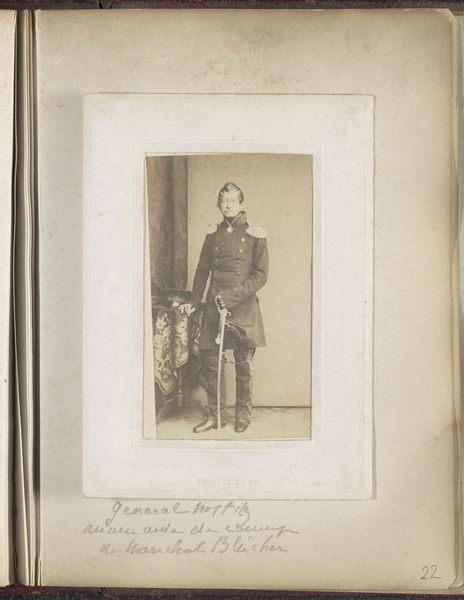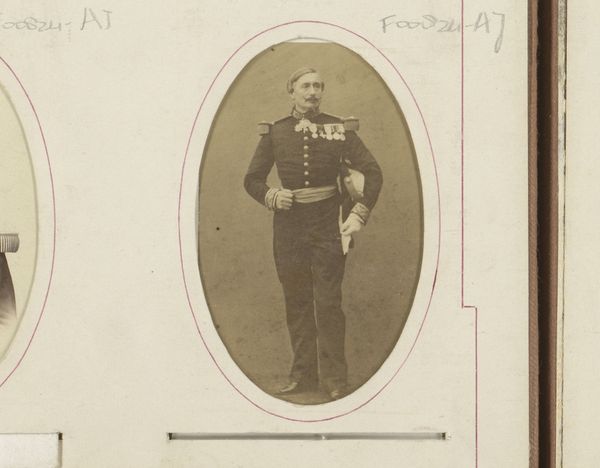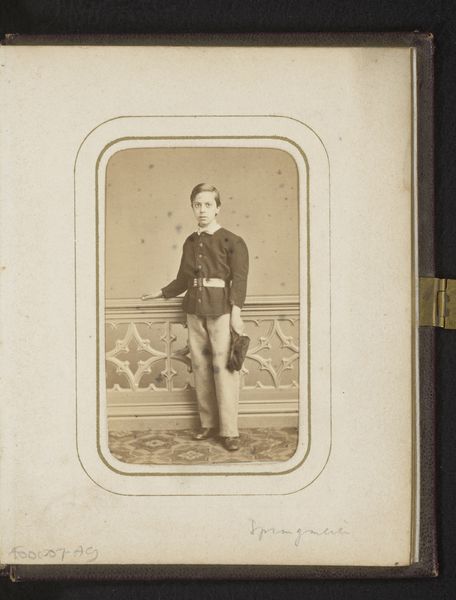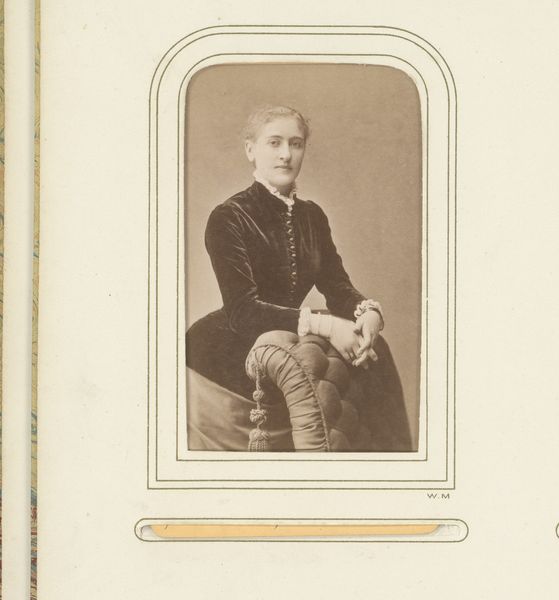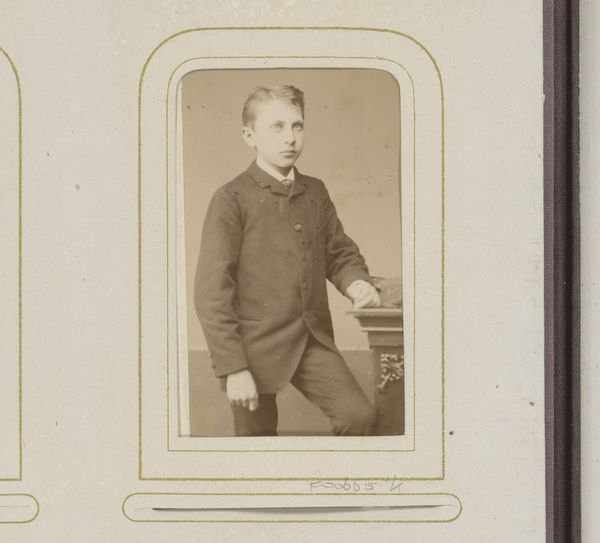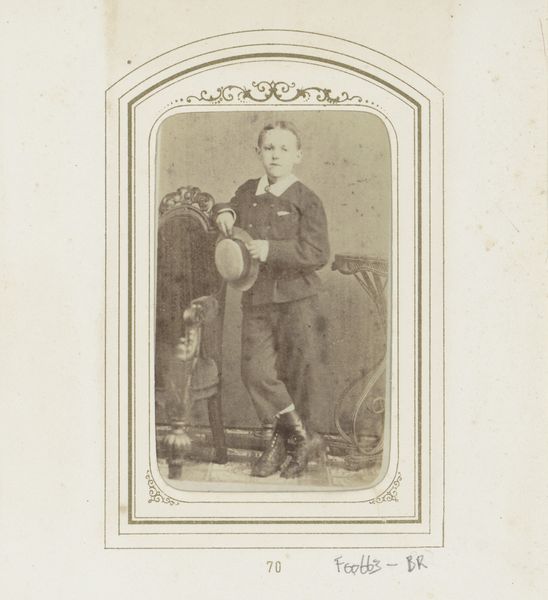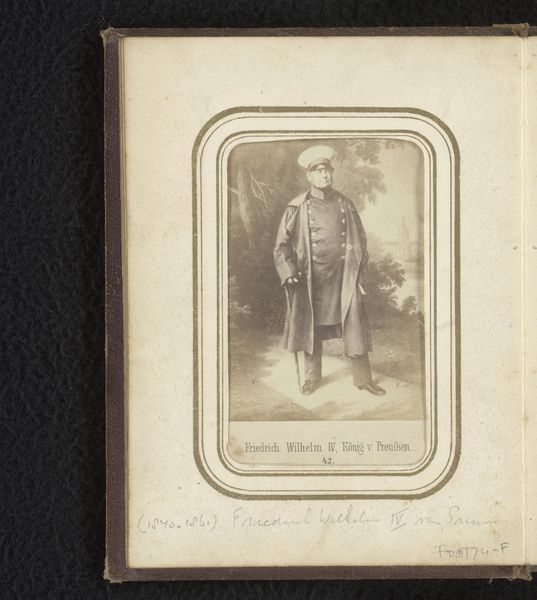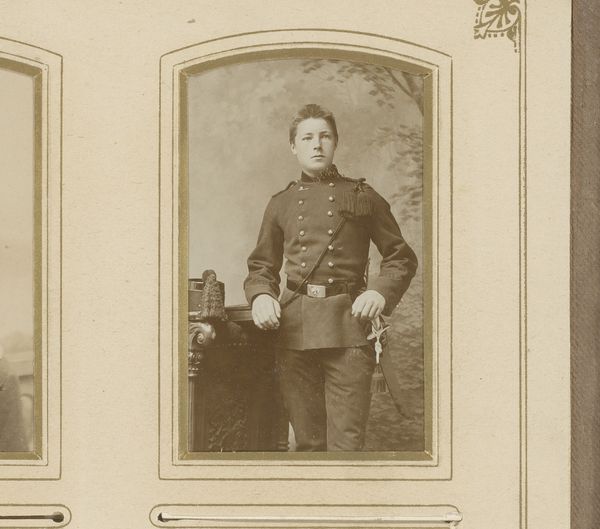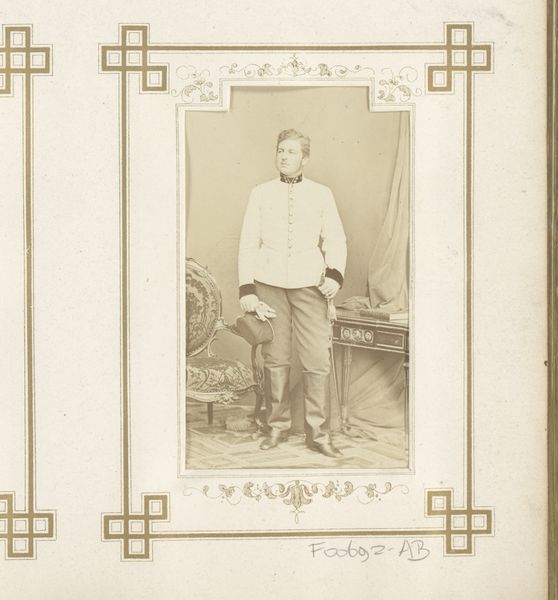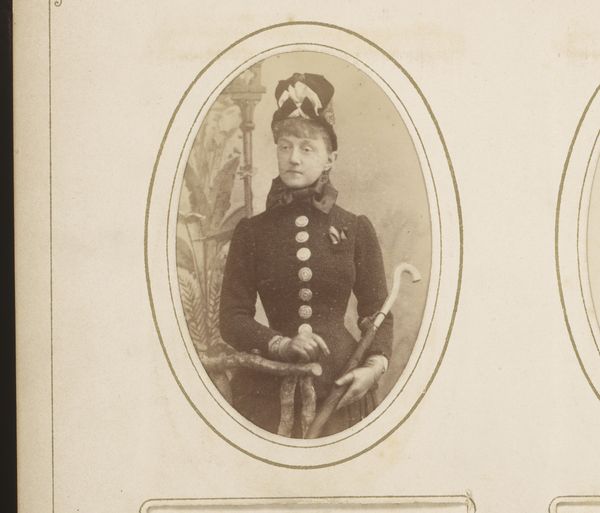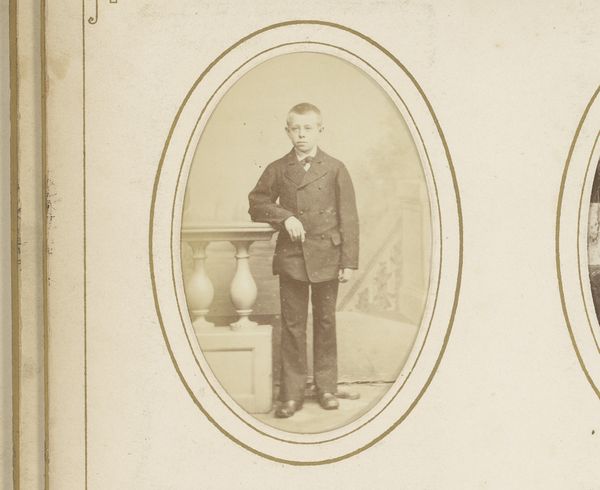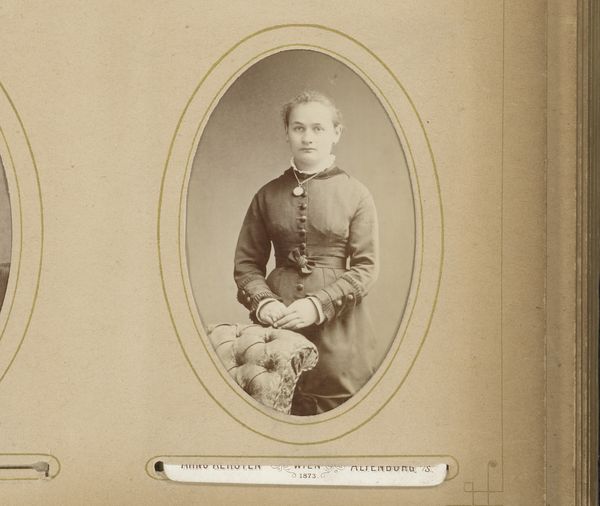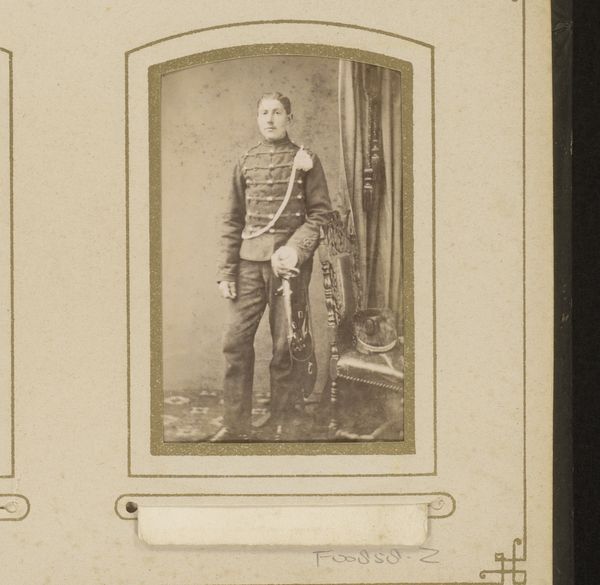
Portret van een jongen in militair uniform, aangeduid als J.L. Las 1873 - 1913
0:00
0:00
photography
#
photography
#
coloured pencil
#
realism
Dimensions: height 105 mm, width 60 mm
Copyright: Rijks Museum: Open Domain
Editor: This is a portrait of a young boy, seemingly named J.L. Las, in military uniform, created between 1873 and 1913, from Friedrich Julius von Kolkow. I find the image so formal, so…serious. How do you interpret this work? Curator: Well, consider the visual language here. The boy's attire, the rigid posture, the sword at his side – these are all potent symbols of power, duty, and a very particular vision of masculinity that prevailed at the time. Notice the photograph has been sepia toned which creates the look of antiquity and authenticity to suggest cultural memory. What emotions does it bring up for you? Editor: There's a clear attempt to present the boy as someone important, but he's still a child. Curator: Precisely. That tension is key. Military dress, particularly in photographic portraits, carried a significant weight. Images could be highly performative gestures to assert status, to connect oneself to historical narratives of heroism or imperial authority. Editor: So, it’s less about this specific boy, and more about the ideas he represents? Curator: Absolutely. Look at the chair he leans upon; does the ornateness seem accidental? Such elements work as deliberate props, creating an impression, an aspirational visual narrative that connects the sitter to larger themes, of military prestige and cultural permanence. The very act of commissioning a photograph in such a style speaks volumes. What assumptions can be made based on such intentional staging? Editor: It feels like they're trying to create a lasting image, an ideal to live up to. The use of symbolic objects for legacy feels striking here. Curator: Indeed, such images invite us to reflect upon enduring themes of social power, visual memory, and the very performance of identity. This visual construction suggests larger ideas about aspiration, representation, and the inheritance of ideals. Editor: I've learned to think of these older images as less straightforward and much more embedded with meaning. Curator: Precisely. Photography offers potent opportunities for the encoding of enduring concepts. Hopefully you carry these notions through further considerations in other works you study.
Comments
No comments
Be the first to comment and join the conversation on the ultimate creative platform.
